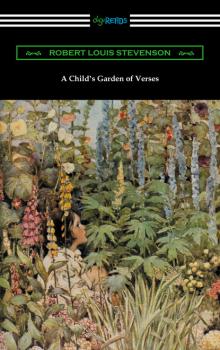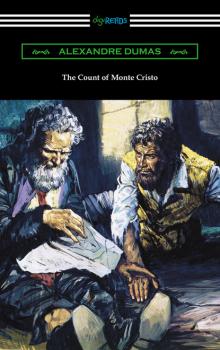ТОП просматриваемых книг сайта:
Зарубежная классика
Различные книги в жанре Зарубежная классика, доступные для чтения и скачиванияАннотация
First published in 1873, “Around the World in Eighty Days” is a classic tale of adventure by French author Jules Verne, which tells the story of eccentric English inventor Phileas Fogg and his newly employed French valet Passepartout as they set out to circumnavigate the globe in eighty days. When Fogg gets into an argument at the Reform Club over an article in “The Daily Telegraph,” which posits that the building of a new railway section in India may now make it possible to circle the earth in eighty days, he hastily accepts a wager with his fellow club members to attempt the feat. In a mad dash he hurries off at once, with Passepartout, in a voyage around the world. Encountering many obstacles and misadventures along the way the two must make numerous accommodations when things do not go as planned. Matters are further complicated by the pursuit of a Scotland Yard detective named Fix, who mistakenly believes Fogg to be a bank robber on the run. “Around the World in Eighty Days,” is a classic work of genuine creativity and sheer delight that continues to amuse audiences until this day. This edition follows the translation of George Makepeace Towle.
Аннотация
First published serially in 1868, Wilkie Collins’s “The Moonstone” is generally considered as the first full length detective novel in the English language. The novel concerns a large valuable diamond plundered from India by Colonel Herncastle during the Siege of Seringapatam. Herncastle, who has been shunned by his own family, decides to bequeath the diamond to his niece Rachel Verinder on her eighteenth birthday. At her birthday party, Rachel wears the Moonstone for all to see, later that night the diamond goes missing from her room and quickly an investigation ensues to discover the identity of the thief and recover the jewel. Suspicion quickly falls upon three Indian jugglers at the party who are actually disguised Hindu priests who have dedicated their lives to recovering the diamond which has great religious significance. Despite the efforts of Sergeant Cuff, a renowned detective, the night ends with the mystery unsolved. Described by G. K. Chesterton as “probably the best detective tale in the world”, “The Moonstone” is one of Wilkie Collins’s most popular works which influenced the development an entirely new genre of fiction. This edition includes a biographical afterword.
Аннотация
Considered one of the greatest novels ever written, “War and Peace” masterfully captures an intimate view of humanity on an epic scale. In this sweeping narrative, Tolstoy utilizes a large cast of characters to brilliantly depict the impact of war on society. Set during the Napoleonic Wars, the novel centers its story on five aristocratic Russian families. These characters, particularly Count Pyotr Kirillovich (Pierre) Bezukhov, Prince Andrey Nikolayevich Bolkonsky, and Countess Natalya Ilyinichna (Natasha) Rostova, demonstrate different human struggles that are affected by their history, present era, and culture. They simultaneously develop the concepts on which Tolstoy expounds in the thematic essays interspersed throughout the narrative. “War and Peace” is a work so groundbreaking that it was not even considered a novel when first published in 1865. In redefining the fictional genre, Tolstoy’s genius has explored the human condition with a sensibility that is reflective of the nature and spirit of Russia itself. This edition follows the translation of Louise and Aylmer Maude.
Аннотация
First published in 1885 under the title “Penny Whistles”, Robert Louis Stevenson’s “A Child’s Garden of Verses”, is a collection of sixty-five poems for children about darkness and solitude. Amongst the collection includes such classics as “Foreign Children”, “The Lamplighter”, “The Land of Counterpane”, “Bed in Summer”, “My Shadow”, and “The Swing.” Inspired by many of his personal experiences as a child, Stevenson in this collection evokes the loneliness of being young, which he personally felt growing up due to his many illnesses, the spirit of adventure that filled his imagination as a youth, and his recollections of friends, family, and nature during the times he spent playing in the gardens at Colinton Manse. A beautiful collection of poetry, “A Child’s Garden of Verses” is sure to evoke memories of youth in all its readers and delight the child in all of us. This edition includes the illustrations of Jessie Wilcox Smith which first appeared in the 1905 edition.
Аннотация
Dante Alighieri was born in Florence, Italy in the middle of the 13th century and what is principally known of him comes from his own writings. One of the world’s great literary masterpieces, the “Divine Comedy” is at its heart an allegorical tale regarding man’s search for divinity. The work is divided into three sections, “Inferno”, “Purgatorio”, and “Paradiso”, each containing thirty-three cantos. It is the narrative of a journey down through Hell, up the mountain of Purgatory, and through the revolving heavens into the presence of God. In this aspect it belongs to the two familiar medieval literary types of the Journey and the Vision, however Dante intended the work to be more than just simple allegory, layering the narrative with rich historical, moral, political, literal, and anagogical context. In order for the work to be more accessible to the common readers of his day, Dante wrote in the Italian language. This was an uncommon practice at the time for serious literary works, which would traditionally be written in Latin. One of the truly great compositions of all time, the “Divine Comedy” has inspired and influenced readers ever since its original creation. Presented here is the first volume of the “Divine Comedy” translated into English verse by Henry Wadsworth Longfellow.
Аннотация
First serialized in Blackwood’s Magazine in 1899, “Heart of Darkness” is the story of steamboat captain Charlie Marlow’s voyage into the primitive interior of the Congo of Africa. As a manager of a Belgian ivory company, Marlow travels up the Congo River to meet Kurtz, an agent of the ivory company. Deep in the interior of Africa Marlow finds Kurtz living among the savage natives who revere him as a God. While neither a critical nor financial success during Conrad’s lifetime, “Heart of Darkness” has since become Conrad’s most famous work, one of the most analyzed works in the history of literature. In “Heart of Darkness”, the Polish born Conrad has crafted an intense psychological drama that deals with the very nature of good and evil. Sharp contrast is drawn by Conrad between the “civilized” world of continental Europe and the “uncivilized” world of the interior of Africa, in a mysteriously ambiguous narrative that presents the reader with an inquisitive commentary of the evil savagery that lies at the heart of human existence. This edition includes a biographical afterword.
Аннотация
One of Alexandre Dumas’ most beloved novels and one of the best-selling works of its day, “The Count of Monte Cristo” is an expansive adventure novel with a huge cast of characters, all revolving around the young sailor Edmond Dantès. Wrongfully accused of aiding the exiled Napoleon, Dantès is arrested on the day of his wedding and imprisoned on the island prison, Chateau d’If. He survives years of cramped confinement and eventually befriends another prisoner, an Italian who knows the location of a treasure on the island of Monte Cristo. After an intrepid escape, Dantès utilizes his new fortune to extract revenge from his enemies, pursuing those who imprisoned him to a bitter end for all concerned. An ageless tale of adventure filled with mercy, courage, and hope, “The Count of Monte Cristo” endures as one of the classics of world literature. This edition includes a biographical afterword.
Аннотация
Set during the early part of the 19th century, George Eliot’s “Middlemarch” is a work of epic scope that centers on the intersecting lives of the inhabitants of the fictitious titular town of Middlemarch. The themes of the novel are as numerous as its characters. Through the narrative of the story the author addresses the status of women, the nature of marriage, politics, religion, and education in the 19th century. The story is principally concerned with the lives of Dorothea Brooke, an energetic, intelligent, wealthy young woman and of Tertius Lydgate, an idealistic, talented, yet naïve young doctor. Strong parallels can be drawn between the two characters; they both have great aspirations in their work and find themselves in marriages in which they are not happy with. In addition, numerous sub-plots draw together the lives of the inhabitants of the town. Considered one of the great achievements of English literature, George Eliot’s “Middlemarch” was immensely popular upon its original publication and remains to this day one of the finest examples of the author’s prolific and accomplished literary career.
Great Expectations (with a Preface by G. K. Chesterton and an Introduction by Andrew Lang) - Charles Dickens
Аннотация
“Great Expectations” is the classic novel by Charles Dickens that traces the life of an orphan named Pip. The novel begins on Christmas Eve 1812 where we find a seven year old Pip as he encounters an escaped convict in the cemetery where Pip’s family is buried. Pip lives with his abusive older sister, and her husband Joe Gargery, a blacksmith, whom Pip works for as an apprentice. A wealthy spinster, Miss Havisham, encourages a friendship between Pip and her adopted daughter Estella. When Pip receives a large sum of money from an anonymous benefactor, whom he assumes to be Miss Havisham, he leaves for London to become a gentleman. Soon after Estella arrives in London and Pip, who is in love with the girl, escorts her about the town. When it is discovered that Miss Havisham is not the anonymous benefactor, a series of events is set in motion with tragic consequences. At the center of the novel is a complicated set of themes that can be simplified by the idea that the affection of love and loyalty of friendship are more important than aspirations for wealth and to a higher social class. This edition includes a preface by G. K. Chesterton, an introduction by Andrew Lang, and a biographical afterword.
Аннотация
First published in the pulp magazine “All-Story Magazine” in October, 1912, “Tarzan of the Apes” is the first novel in a series of adventure novels that was so popular that it would spawn some two dozen sequels. It is the coming of age story of John Clayton, the son of an English couple, Lord and Lady Greystoke, who are marooned in the western coastal jungles of equatorial Africa. When his father is killed by the savage king ape Kerchak and his mother dies of natural causes when he is just one year old, Clayton is adopted by the she-ape Kala and renamed Tarzan, or “white skin” in the ape language. As Tarzan grows up he begins to recognize that he is different from his ape peers, a realization that stirs within him feelings of alienation and drives him to discover his true heritage. Tarzan discovers his true parents’ cabin and there, in books, he learns of others like himself. Tarzan becomes a skilled hunter gaining him respect amongst the apes and drawing the ire of Kerchak, setting up a final and fatal conflict between the two. This classic tale of adventure by Edgar Rice Burroughs has captivated readers both young and old ever since its original publication in 1912. This edition includes a biographical afterword.










